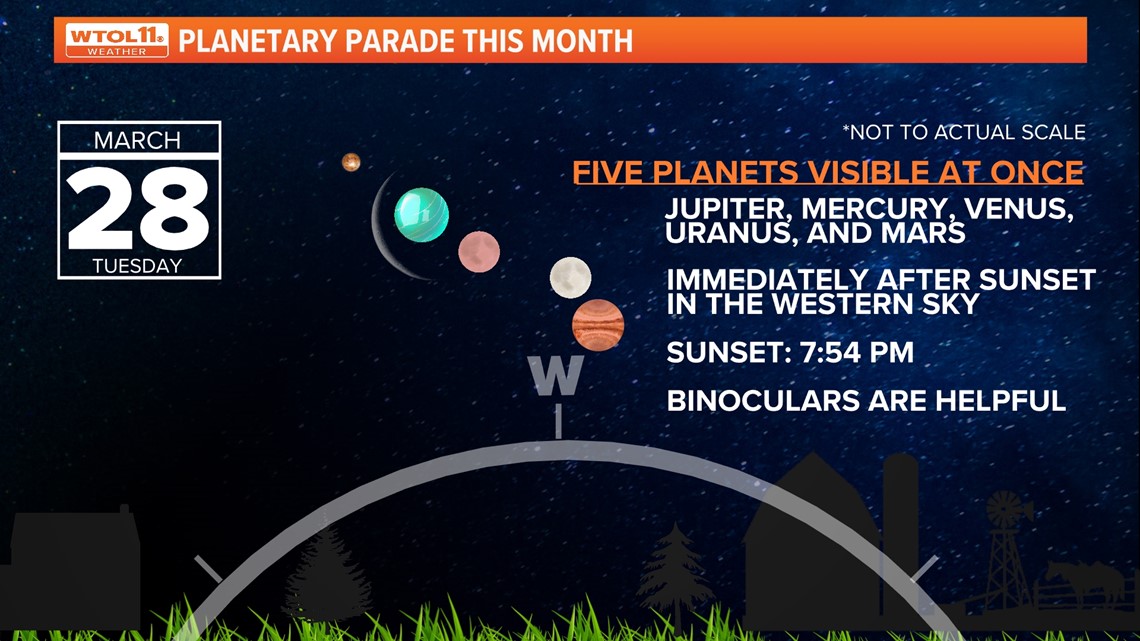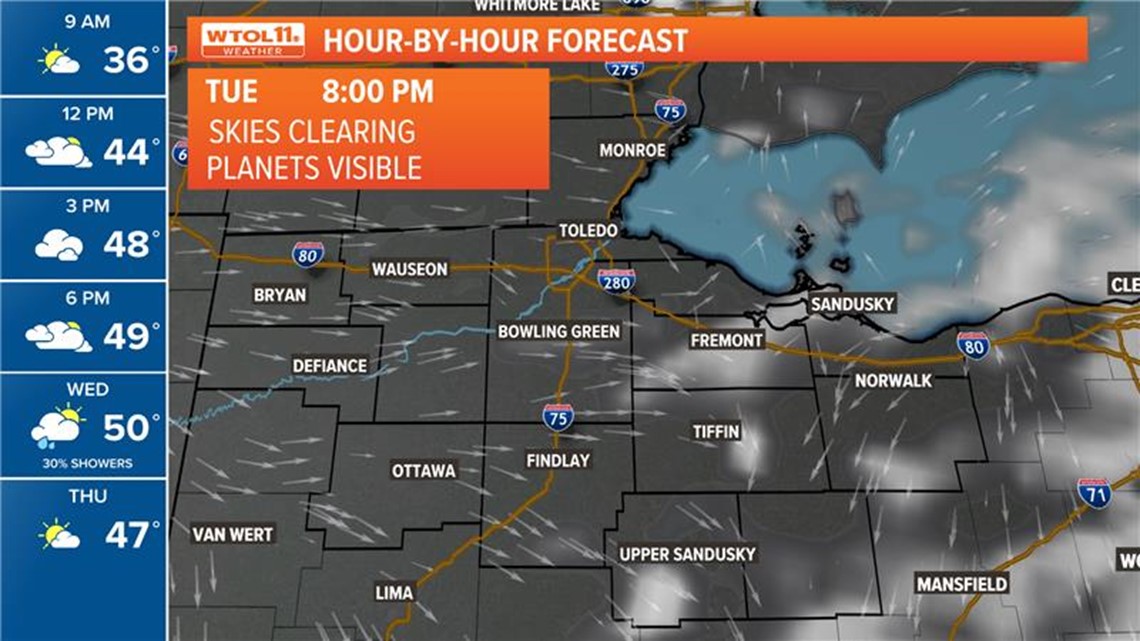TOLEDO, Ohio — Earlier this month, stargazers and sky-watchers alike witnessed Venus and Jupiter appear to cross each other in a planetary conjunction. If you still have an appetite for observing interesting astronomical phenomena from the comfort of your own backyard, you're in for another wonderful sight Tuesday evening.
Just after sunset at 7:54 p.m. Tuesday, you can watch a "planetary parade" to the west, during which five of the Solar System's seven planets (excluding Earth) will appear in a diagonal line. If you have a clear view of the western horizon at sunset, you will be able to see the following planets: Jupiter, Mercury, Venus, Uranus and Mars.


How can I identify the planets?
Jupiter is identifiable by its brightness and, if you have powerful binoculars or a telescope, its four Galilean moons. Mercury will be somewhat dimmer, as although it is substantially closer to Earth than Jupiter, it is much smaller. Mercury will appear just adjacent to Jupiter.
Shortly after sunset, Jupiter and Mercury will also set below the horizon. The show continues with Venus, Uranus and Mars, which will remain above horizon later into the night. Venus and Uranus will not set until approximately 10:45 p.m. If you're a night owl, you can catch Mars until 2:45 a.m. Wednesday, after which it will sink below the horizon, followed shortly thereafter by the moon.
Venus is easily spotted as the brightest object in the night sky, barring the moon. Above it, you may be able to catch Uranus, a sighting far more infrequent than appearances from the Solar System's other planets. If you catch a glimpse of Uranus, it will be easily identifiable by its blue-green glow. Because it is so distant (over 1 billion miles, on average) from Earth, using binoculars or a telescope may aid your viewing of Uranus.
What else will be visible in the sky Tuesday evening?
If you look between Uranus and Mars, another celestial object may catch your eye: a star cluster called Pleiades. You may also recognize it by another name and logo: Subaru. Pleiades is known as Subaru in Japan and serves as the namesake for the popular automotive company, whose six-star logo reflects the celestial cluster.
Pleiades is composed of over 1,000 stars, according to astronomers, but only about six can be seen with the naked eye, binoculars and low-power telescopes. If you're viewing Pleiades unaided, it can be helpful to look just adjacent to it; looking directly at it can make it appear fainter to the human eye.
The moon will also be high in the sky Tuesday night. As a waxing crescent, it won't outshine other sky objects like a full moon would.
Will the weather cooperate?
Clouds will be visible in the skies over northwest Ohio and southeast Michigan for much of Tuesday. Those clouds would make it tough to view the planetary alignment, however, a rush of drier air is forecasted to arrive just in time for sunset.
Not only will that make for a bright, vibrant sunset, it will create a good chance to see the rare view of 5 planets in the sky at a single time. The higher chance for the clear skies will be found near and west of Toledo. Clouds may obscure the sky more the further east you live but those skies will gradually clear out as the early evening progresses.


MORE LOCAL HEADLINES FROM WTOL 11:

